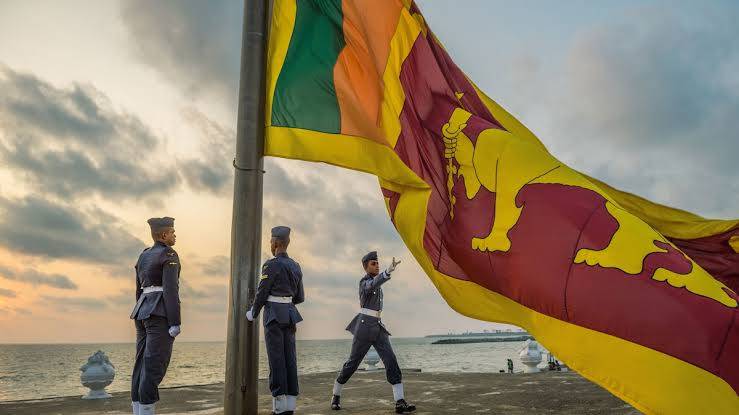
The island nation of Sri Lanka will reduce the size its army by nearly a third - from approximately 346,000 personnel to 135,000 by next year - and thereafter to 100,000 personnel by 2030, the country's state minister of defence Premitha Bandara Thennakoon said on Friday. The latest measure comes as the beleaguered country tries to cut costs as it faces the worst economic crisis in its history.
With a population of 22 million people, Sri Lanka has been forced to cut back on all government expenditures after it suffered a deep economic crisis last year, when foreign exchange reserves dried up and mass public protests led to the removal of the Rajapaksa regime.
"Military spending is basically state-borne expenditure, which indirectly stimulates and opens avenues for economic growth by way of assuring national and human security," Thennakoon said in a statement.
The aim is to create a "technically and tactically sound and well-balanced" defence force by 2030, the statement said.
Sri Lanka's total government expenditure on defence peaked in 2021, at 2.31% of gross domestic product (GDP), but fell to 2.03% last year, according to Colombo-based Verite Research. The size of the Sri Lankan military - peaking at 317,000 between 2017 and 2019 according to the World Bank, but currently estimated to be even higher - is larger than it was even during the 25-year-long conflict with the "Liberation Tigers of Tamil Eelam" (LTTE) insurgent group. The conflict between Sri Lanka and the LTTE ended in 2009.
Sri Lanka needs to achieve debt sustainability as a precondition for securing $2.9 billion in a loan from the IMF, which has also 'asked' Colombo to trim its 1.5 million-strong public service, sharply raise taxes, and sell state enterprises that are incurring losses. A cascade of crises, rooted in misguided government priorities on infrastructure spending, and then a massive negative shock to the tourism industry due to COVID, left Sri Lanka teetering on the brink of financial default.
Sri Lankans endured months of food and fuel shortages, chronic blackouts and runaway inflation, all of which continues to inflame public anger. Mass protests spilled out into the streets and then into the residence, both private and official, of the Rajapakse family. Then-president Gotabaya Rajapaksa was forced to flee on 13 July 2022 as protesters breached the President's House in Colombo.
Electricity prices in Sri Lanka are also increasing by another 65%, over and above a 75% tariff increase some months ago. Sri Lankan president Ranil Wickremesinghe has already ordered a 5% reduction in government spending across the board, and more cuts are expected as the country also braces for anticipated tax hikes.
With a population of 22 million people, Sri Lanka has been forced to cut back on all government expenditures after it suffered a deep economic crisis last year, when foreign exchange reserves dried up and mass public protests led to the removal of the Rajapaksa regime.
"Military spending is basically state-borne expenditure, which indirectly stimulates and opens avenues for economic growth by way of assuring national and human security," Thennakoon said in a statement.
The aim is to create a "technically and tactically sound and well-balanced" defence force by 2030, the statement said.
Sri Lanka's total government expenditure on defence peaked in 2021, at 2.31% of gross domestic product (GDP), but fell to 2.03% last year, according to Colombo-based Verite Research. The size of the Sri Lankan military - peaking at 317,000 between 2017 and 2019 according to the World Bank, but currently estimated to be even higher - is larger than it was even during the 25-year-long conflict with the "Liberation Tigers of Tamil Eelam" (LTTE) insurgent group. The conflict between Sri Lanka and the LTTE ended in 2009.
Sri Lanka needs to achieve debt sustainability as a precondition for securing $2.9 billion in a loan from the IMF, which has also 'asked' Colombo to trim its 1.5 million-strong public service, sharply raise taxes, and sell state enterprises that are incurring losses. A cascade of crises, rooted in misguided government priorities on infrastructure spending, and then a massive negative shock to the tourism industry due to COVID, left Sri Lanka teetering on the brink of financial default.
Sri Lankans endured months of food and fuel shortages, chronic blackouts and runaway inflation, all of which continues to inflame public anger. Mass protests spilled out into the streets and then into the residence, both private and official, of the Rajapakse family. Then-president Gotabaya Rajapaksa was forced to flee on 13 July 2022 as protesters breached the President's House in Colombo.
Electricity prices in Sri Lanka are also increasing by another 65%, over and above a 75% tariff increase some months ago. Sri Lankan president Ranil Wickremesinghe has already ordered a 5% reduction in government spending across the board, and more cuts are expected as the country also braces for anticipated tax hikes.

